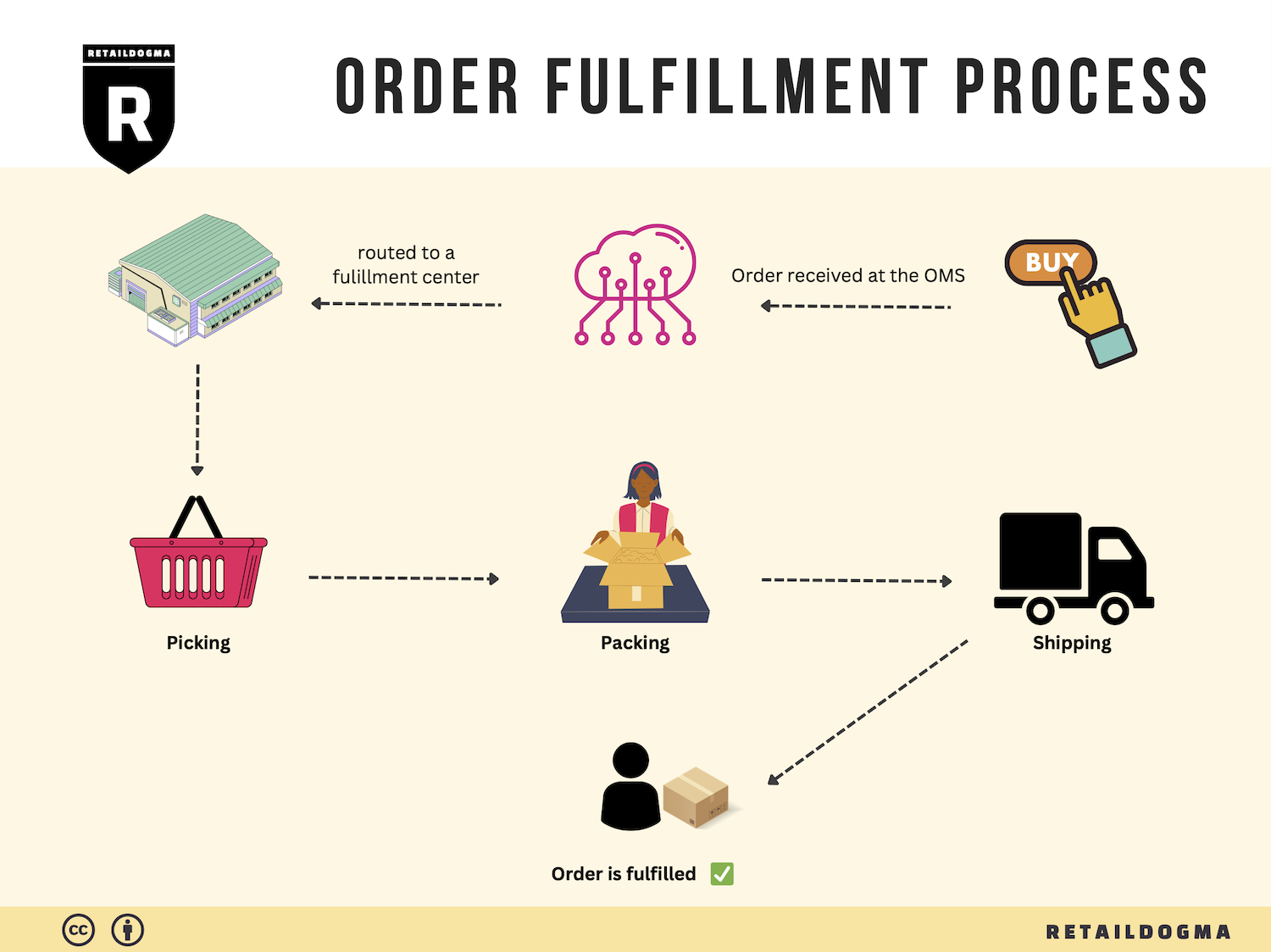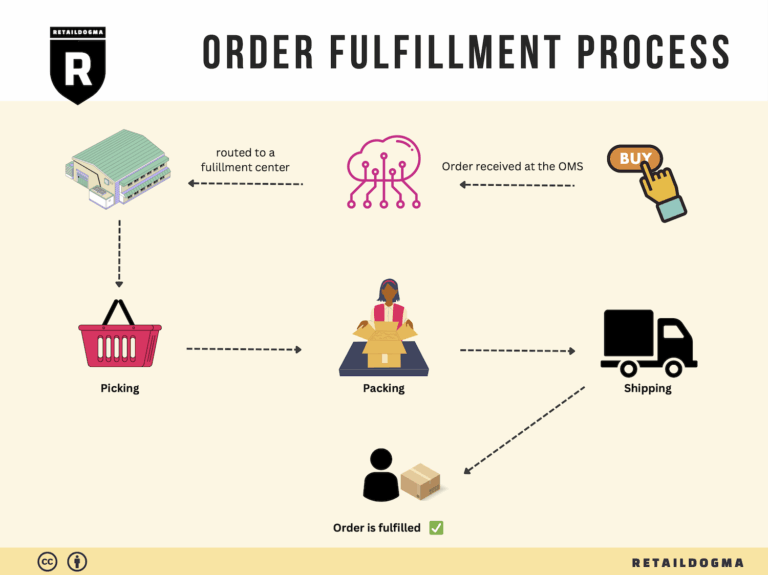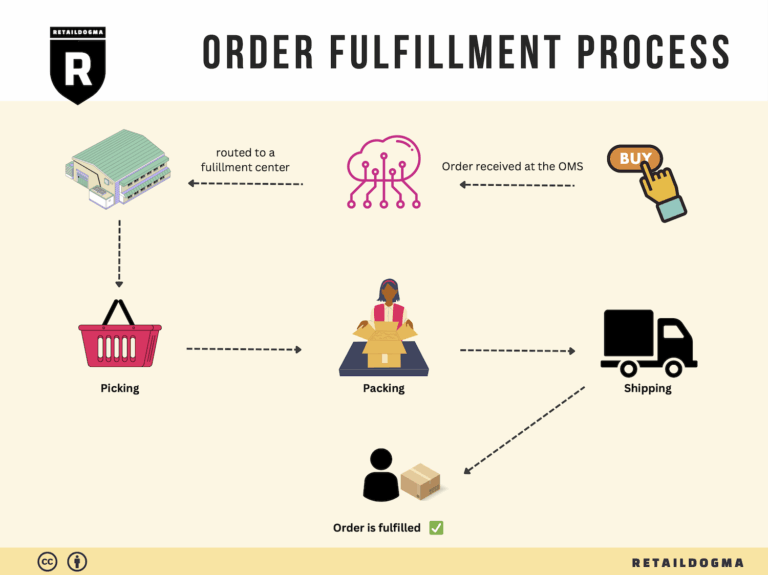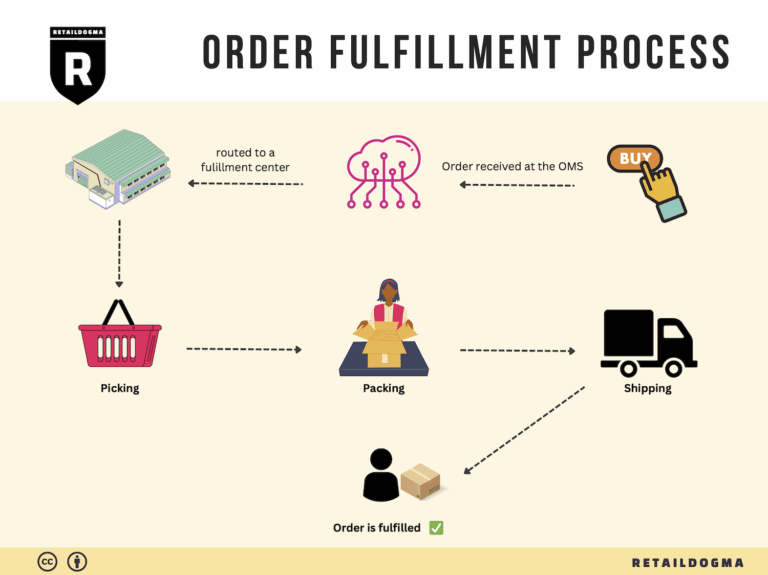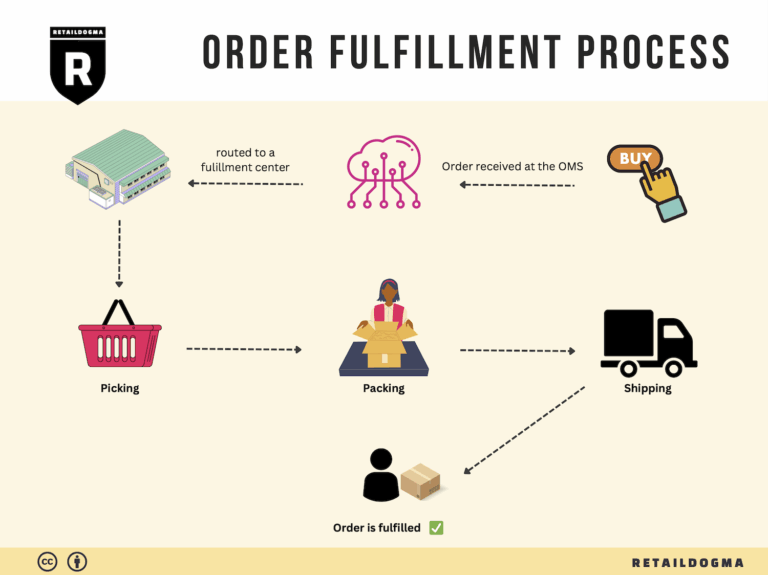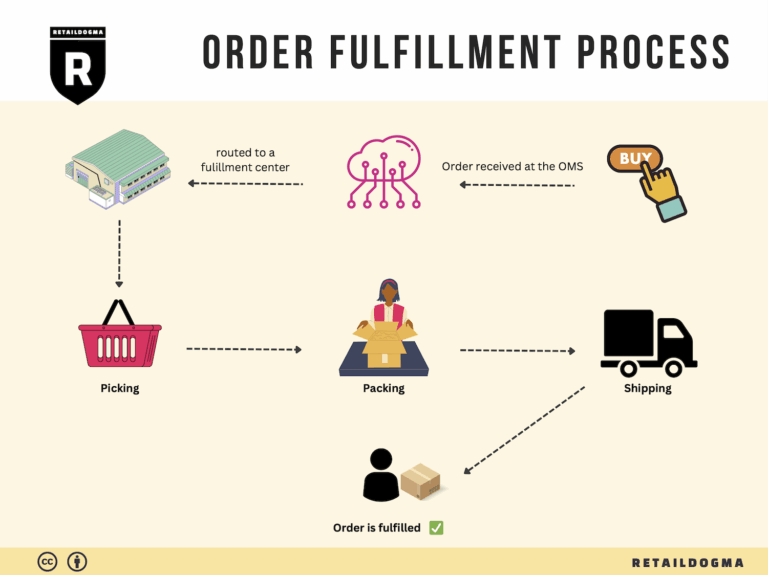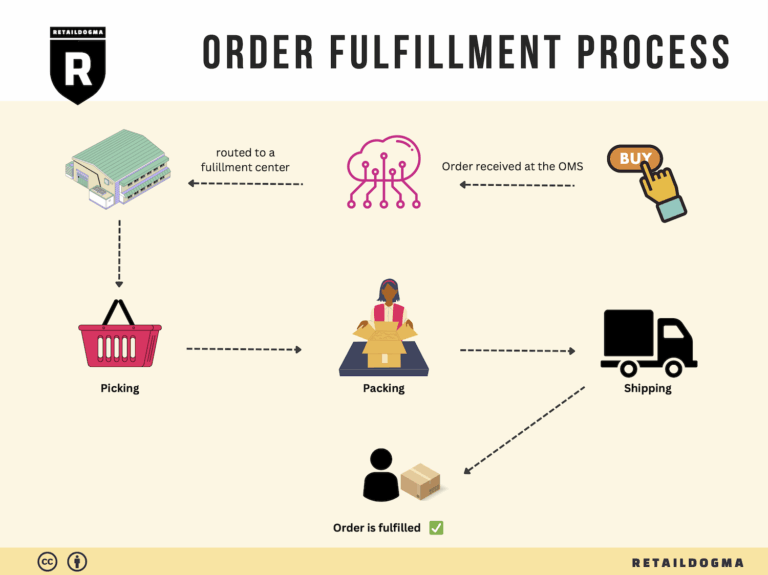Ecommerce Fulfillment Services: The Ultimate Guide (2025)
What is E-commerce Fulfillment? An Introduction for Growing Businesses
Understanding the Challenges of Packing and Shipping
As your e-commerce business begins to scale, the excitement of growth can quickly turn into overwhelm, especially when it comes to packing and shipping orders. Many entrepreneurs find themselves buried under mountains of boxes, packing tape, and shipping labels, leading to frustration and inefficiency. The process of fulfilling orders—getting products from your warehouse to your customers—can become a daunting task that distracts you from your core business activities, such as marketing and customer engagement.
Defining E-commerce Fulfillment
At its simplest, e-commerce fulfillment is the process of receiving, processing, and delivering orders to customers. It encompasses everything from inventory management and order processing to packaging and shipping. Understanding this process is crucial for growing businesses looking to streamline their operations and enhance customer satisfaction.
What This Guide Will Cover
This comprehensive guide aims to demystify e-commerce fulfillment and provide practical insights for business owners. We will explore various fulfillment models, including:
- Third-Party Logistics (3PL): Leveraging external providers to handle warehousing, packing, and shipping.
- Fulfilled by Amazon (FBA): Utilizing Amazon’s extensive fulfillment network to reach customers quickly.
We will also delve into the core services offered by fulfillment partners, such as inventory management, pick and pack services, and returns processing.
Choosing the right fulfillment partner is a critical decision that can impact your bottom line and customer experience. This guide will provide a framework for evaluating potential partners, including key questions to ask and factors to consider.
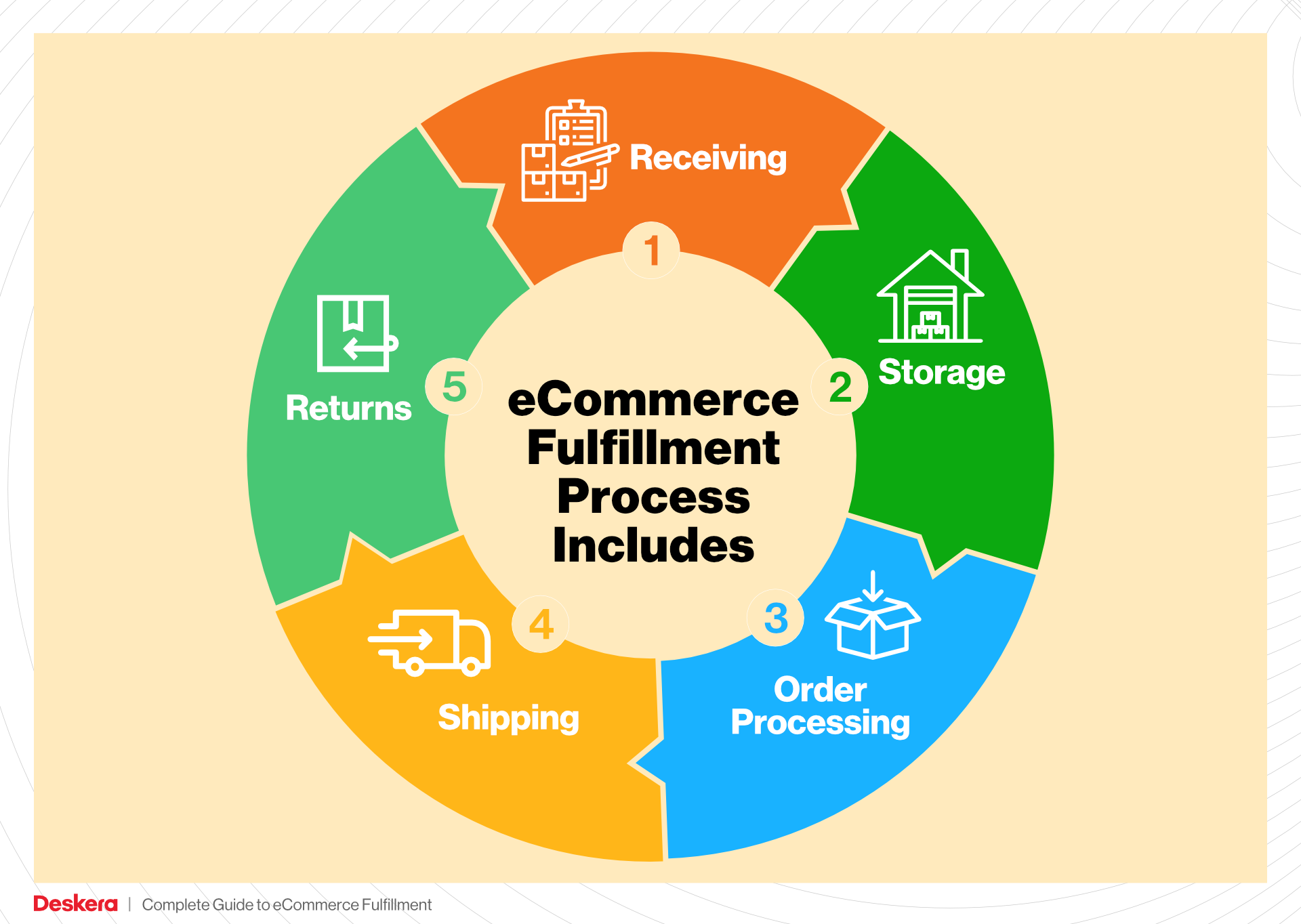
Finally, we will discuss pricing structures typically associated with fulfillment services. Understanding the cost implications of different models will help you make informed decisions that align with your business goals.
Empowering Smart Logistics Decisions
The ultimate goal of this guide is to empower you, the business owner, to make smart logistics decisions that facilitate growth and enhance customer satisfaction. By understanding the ins and outs of e-commerce fulfillment, you can streamline your operations, reduce overhead, and focus on what you do best—growing your business. Whether you’re just starting or looking to scale, mastering fulfillment can transform your e-commerce operations and set you on a path to success.
What You’ll Learn In This Guide
- What is E-commerce Fulfillment? An Introduction for Growing Businesses
- The Order Fulfillment Process: From ‘Buy’ Button to Customer’s Door
- Comparing Fulfillment Models: In-House vs. 3PL vs. Dropshipping
- A Deep Dive into Amazon FBA: Pros, Cons, and Who It’s For
- Core Services Offered by Fulfillment Centers
- How to Choose a Fulfillment Partner: A 6-Point Checklist
- Understanding Fulfillment Pricing: A Breakdown of Common Fees
- Frequently Asked Questions (FAQs) about Fulfillment
- Conclusion: Is Outsourcing Fulfillment the Right Move for Your Business?
- Important Disclaimer
The Order Fulfillment Process: From ‘Buy’ Button to Customer’s Door
1. Receiving Inventory
The first step in the order fulfillment process is receiving inventory. This involves the delivery of products from suppliers to your warehouse or fulfillment center. Upon arrival, items must be checked against purchase orders to confirm that the correct quantities and specifications have been received.
Importance: This step is crucial because any discrepancies can lead to stockouts or overstock situations, both of which can adversely affect customer satisfaction and your bottom line.
Key Term: SKU (Stock Keeping Unit) – A unique identifier for each product, used to track inventory levels and facilitate organization. When receiving inventory, it’s essential to scan or input the SKU for every item to ensure accurate inventory records.
2. Warehouse Storage
Once the inventory is received, the next step is warehouse storage. Products must be organized efficiently to maximize space and streamline the picking process. This often involves categorizing items based on size, type, or sales frequency, and placing them in designated storage areas.
Importance: Proper storage not only makes retrieval easier but also minimizes the time taken to find products, which is critical for meeting customer expectations regarding shipping speed.
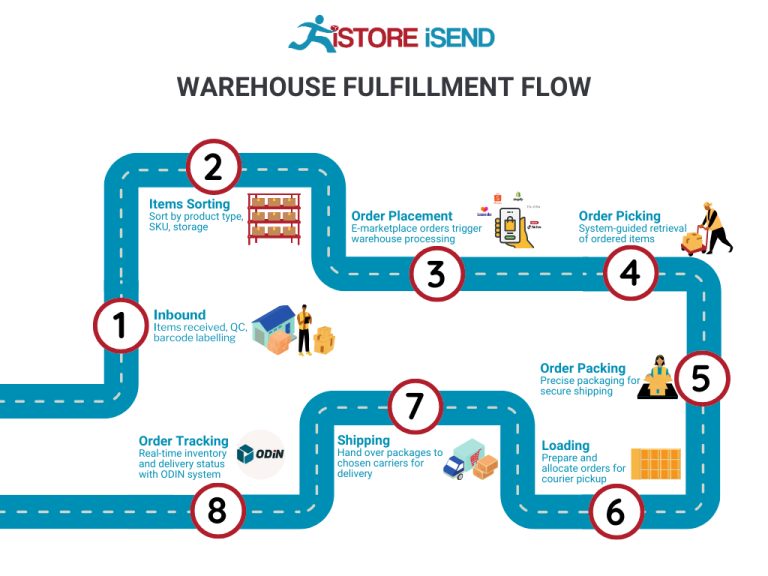
Key Term: Bin Location – A designated area within the warehouse where specific items are stored. Efficiently assigning bin locations can greatly enhance the order-picking process, reducing the time and effort needed to locate items.
3. Order Picking
Order picking is the process of selecting items from the warehouse to fulfill customer orders. This is typically initiated once an order is placed online. Warehouse staff use pick lists—documents that outline which items to retrieve and their locations—to gather the necessary products.
Importance: The accuracy of this step is vital; errors in picking can lead to incorrect orders, which can frustrate customers and result in costly returns. Effective picking strategies, such as batch picking or zone picking, can also significantly enhance efficiency.
Key Term: Pick Lists – These are generated documents that indicate the items and quantities needed for fulfilling orders. A well-structured pick list can streamline the picking process, ensuring that warehouse staff can quickly and accurately gather the right products.
4. Order Packing
Once the items have been picked, the next phase is order packing. This involves preparing the products for shipment, which includes placing items in appropriate packaging materials, adding invoices or packing slips, and ensuring that the items are secured to prevent damage during transit.
Importance: Effective packing is essential for protecting products and ensuring they arrive in good condition. Additionally, well-packed orders can also enhance the customer experience, as they reflect professionalism and attention to detail.
Key Term: Packing Slip – A document that lists the items included in the shipment. Including a packing slip helps customers verify that they received the correct items and quantities.
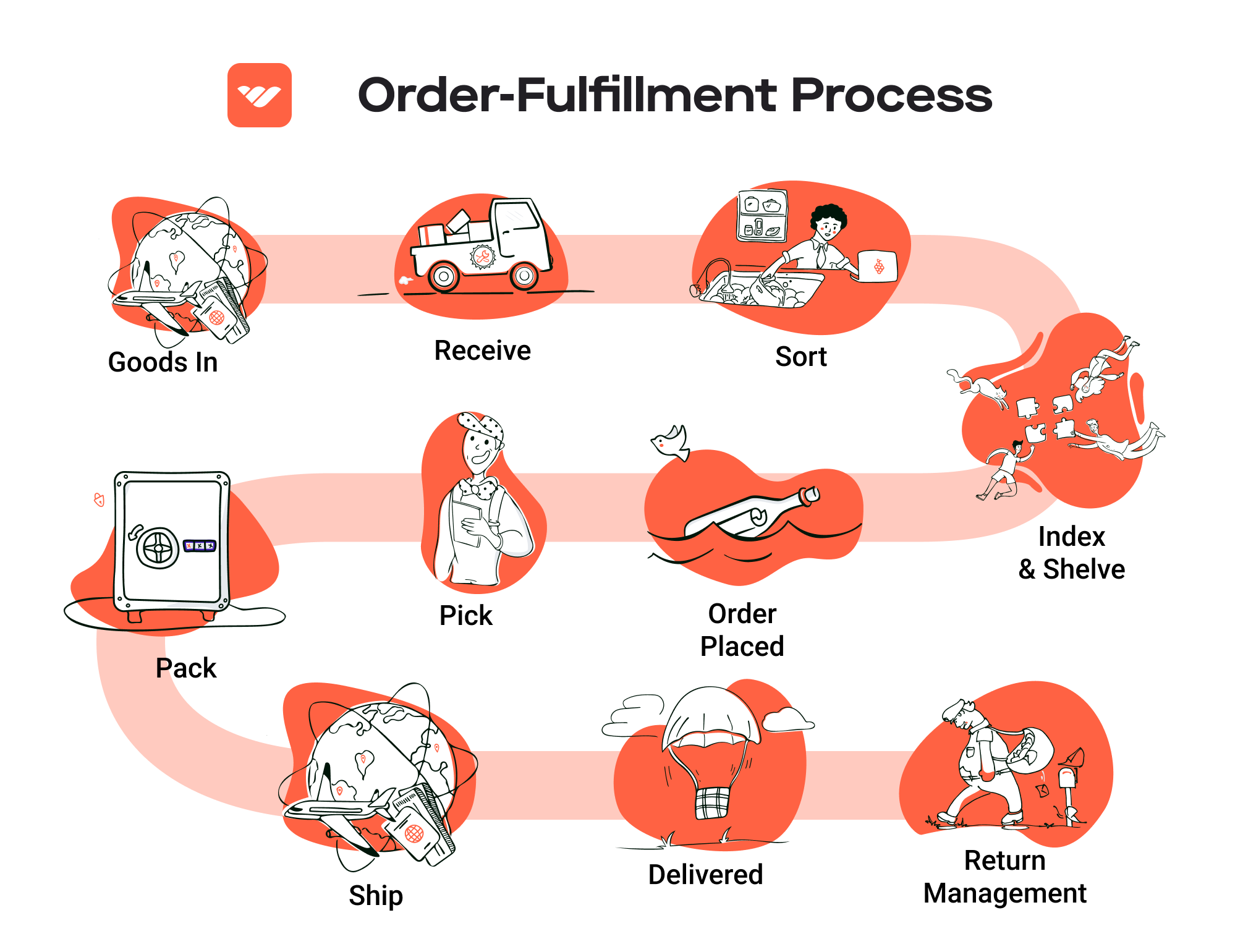
5. Shipping & Delivery
The final step in the order fulfillment process is shipping and delivery. Once orders are packed, they are handed over to shipping carriers for delivery to the customer. This step involves selecting the appropriate shipping method based on factors such as cost, speed, and destination.
Importance: Timely and accurate delivery is a key determinant of customer satisfaction. Delays or mistakes at this stage can lead to negative reviews and lost business.
Key Term: Tracking Number – A unique identifier assigned to a shipment that allows customers to track their order in transit. Providing customers with tracking information not only enhances transparency but also reduces inquiries regarding order status.
By understanding and optimizing each step of the order fulfillment process, e-commerce businesses can enhance operational efficiency, improve customer satisfaction, and ultimately drive growth. Implementing best practices at each stage will help scale your logistics operations and meet the demands of your customers effectively.
Comparing Fulfillment Models: In-House vs. 3PL vs. Dropshipping
Fulfillment Model Comparison
| Model | Who Handles Inventory | Best For (Business Stage) | Key Advantage | Key Disadvantage |
|---|---|---|---|---|
| In-House Fulfillment | Business itself | Startups and Small Businesses | Complete control over inventory and processes | High overhead costs and resource-intensive |
| Third-Party Logistics (3PL) | Third-party provider | Growing Businesses | Scalability and expertise in logistics | Less control over inventory and fulfillment speed |
| Dropshipping | Supplier | Startups and E-commerce | Low startup costs and minimal risk | Lower profit margins and reliance on suppliers |
In-House Fulfillment
In-house fulfillment refers to the process where a business manages all aspects of its inventory and order fulfillment internally. This model is often adopted by startups and small businesses that want complete control over their logistics and customer experience. By handling inventory in-house, businesses can monitor their stock levels closely, customize packaging, and ensure quality control throughout the fulfillment process. This level of control can foster stronger customer relationships, as businesses can tailor their services to meet specific customer needs.
However, the in-house model comes with significant challenges. The operational costs can be high due to the need for warehouse space, staff, and equipment, which may strain the budget of a growing business. Additionally, managing logistics can be resource-intensive, requiring dedicated staff and systems to handle orders efficiently. As demand increases, scaling operations can become cumbersome, leading to potential delays in order processing and fulfillment, ultimately impacting customer satisfaction.
Third-Party Logistics (3PL)
Third-party logistics (3PL) providers offer a comprehensive solution for businesses looking to outsource their logistics and fulfillment processes. This model is particularly beneficial for growing businesses that want to scale without the burden of managing logistics in-house. 3PL providers handle warehousing, inventory management, order fulfillment, and shipping, allowing businesses to focus on core activities such as marketing and product development.
One of the key advantages of utilizing a 3PL provider is the scalability it offers. As order volumes increase, businesses can easily adjust their logistics solutions without needing to invest heavily in infrastructure or staffing. Additionally, 3PL providers often have established relationships with shipping carriers, enabling them to negotiate better rates and provide faster shipping options. However, this model does come with a trade-off: businesses may have less control over their inventory and fulfillment processes. Dependence on a third party can lead to inconsistencies in service quality, potentially affecting the overall customer experience.
Dropshipping
Dropshipping is a fulfillment model where a business sells products without holding any inventory. Instead, when a customer places an order, the business purchases the item from a third-party supplier who then ships it directly to the customer. This model is especially appealing for startups and e-commerce businesses looking to minimize upfront costs and risks associated with inventory.
The primary advantage of dropshipping is the low barrier to entry. Entrepreneurs can start an e-commerce business without the need to invest in inventory or warehouse space, making it an attractive option for those testing the market. This model also allows for a broad product range without the financial burden of unsold stock. However, dropshipping has its downsides. Profit margins can be lower compared to other fulfillment models, as suppliers often charge higher prices for their services. Additionally, businesses are reliant on their suppliers for inventory management and shipping, which can lead to issues with product availability and fulfillment speed, ultimately affecting customer satisfaction.
In conclusion, each fulfillment model has its unique advantages and disadvantages, and the right choice depends on the specific needs and stage of your business. Understanding the implications of each model will allow e-commerce business owners and operations managers to make informed decisions that align with their growth strategies.
A Deep Dive into Amazon FBA: Pros, Cons, and Who It’s For
Understanding Fulfillment by Amazon (FBA)
Fulfillment by Amazon (FBA) is a service that allows e-commerce businesses to leverage Amazon’s extensive logistics and distribution network. With FBA, sellers can store their products in Amazon’s fulfillment centers, and when an order is placed, Amazon handles the packing, shipping, and customer service on behalf of the seller. This streamlined process not only simplifies logistics for sellers but also enhances the shopping experience for customers.
How FBA Works
-
Account Setup: To begin using FBA, sellers must create an Amazon Seller account. This account can either be an Individual or Professional plan, depending on the volume of sales.
-
Product Listing: Sellers list their products on Amazon as they normally would. During this process, they can select FBA as their fulfillment method.
-
Inventory Shipment: After listing their products, sellers prepare their inventory and ship it to Amazon’s fulfillment centers. Amazon provides specific guidelines regarding packaging and labeling to ensure a smooth process.
-
Order Fulfillment: Once inventory is received at Amazon’s warehouses, the products become available for purchase. When a customer places an order, Amazon picks, packs, and ships the product directly to the customer.
-
Customer Service and Returns: Amazon also manages customer service inquiries and handles returns for FBA orders, allowing sellers to focus on other aspects of their business.
Pros of Using FBA
-
Prime Eligibility: One of the most significant advantages of FBA is that products become eligible for Amazon Prime. This increases visibility and attracts Prime members who prefer fast, free shipping, thereby boosting sales.
-
Customer Trust: Amazon is a trusted brand, and customers often feel more secure purchasing products fulfilled by Amazon. This trust can translate into higher conversion rates and repeat business for sellers.
-
Multi-Channel Fulfillment: FBA supports multi-channel fulfillment, allowing sellers to use Amazon’s logistics for orders placed on other platforms, such as their own websites or eBay. This flexibility can streamline operations and reduce overhead.
-
Scalability: FBA enables businesses to scale without the need for significant investments in warehousing and logistics. As sales grow, sellers can send more inventory to Amazon without worrying about the complexities of managing fulfillment themselves.
-
Time Savings: By outsourcing logistics to Amazon, sellers can focus on other critical areas of their business, such as marketing, product development, and customer engagement.
Cons of Using FBA
-
High Fees: While FBA provides many advantages, it comes with costs that can add up quickly. Sellers must pay storage fees for their inventory, fulfillment fees for each unit sold, and additional charges for long-term storage. These fees can significantly impact profit margins.
-
Strict Inventory Rules: Amazon has stringent policies regarding inventory management. Sellers must adhere to guidelines concerning product condition, labeling, and packaging. Non-compliance can lead to penalties or the removal of inventory.
-
Commingling Risks: FBA operates on a commingling model, meaning that products from different sellers may be stored together. This can pose risks, such as receiving returns of products that are not yours or issues with counterfeit items affecting your account.
-
Limited Control: When using FBA, sellers relinquish some control over the fulfillment process. Any issues with shipping, handling, or customer service are managed by Amazon, which can lead to frustrations if problems arise.
-
Inventory Management Challenges: Sellers must maintain optimal inventory levels at Amazon’s fulfillment centers to avoid stockouts or excess storage fees. This requires careful planning and forecasting, which can be challenging, especially for new sellers.
Who is FBA Best For?
Fulfillment by Amazon is particularly well-suited for certain types of businesses:
-
Small to Medium-Sized E-Commerce Businesses: Businesses looking to scale quickly without investing heavily in logistics infrastructure can benefit from FBA’s capabilities.
-
Sellers with a High Volume of Orders: Companies with steady sales that can justify the fees associated with FBA will find it a cost-effective solution.
-
Brands Seeking Prime Visibility: Sellers who want to tap into Amazon’s vast Prime customer base can increase their sales potential significantly.
-
Entrepreneurs Focused on Growth: Businesses that wish to focus on product development, marketing, or customer engagement rather than logistics will find FBA a valuable partner.
-
Multi-Channel Sellers: Brands selling on multiple platforms can utilize FBA for streamlined fulfillment, simplifying their logistics across channels.
In conclusion, FBA presents a powerful opportunity for e-commerce businesses to enhance their operations and scale efficiently. However, it is essential for sellers to weigh the pros and cons carefully, considering their specific business models and objectives. By understanding how FBA works and its implications, e-commerce entrepreneurs can make informed decisions that align with their growth strategies.
Core Services Offered by Fulfillment Centers
Inventory Management & Warehousing
Inventory management and warehousing are foundational services provided by fulfillment centers. This process involves the systematic tracking and storage of products that e-commerce businesses sell. Fulfillment centers utilize advanced inventory management systems to monitor stock levels, manage reorder points, and forecast demand.
Benefits:
-
Optimized Stock Levels: By effectively managing inventory, businesses can prevent stockouts and overstock situations. This balance ensures that products are available when customers want them, improving overall sales and customer satisfaction.
-
Space Efficiency: Fulfillment centers are equipped with specialized storage solutions that maximize space utilization, allowing e-commerce businesses to store a greater variety of products without the need for large warehouse investments.
-
Real-Time Data: Advanced inventory systems provide real-time visibility into stock levels, enabling businesses to make informed decisions regarding purchasing, promotions, and sales strategies. This data-driven approach enhances responsiveness to market trends.
Pick and Pack Services
Pick and pack services are crucial for fulfilling customer orders efficiently. This process involves selecting the right products from the warehouse (picking) and preparing them for shipment (packing). Fulfillment centers employ trained staff and automated systems to ensure accuracy and speed in this operation.
Benefits:
-
Increased Order Accuracy: With meticulous picking processes, fulfillment centers significantly reduce errors in order fulfillment. This accuracy minimizes returns and enhances customer trust.
-
Faster Turnaround Times: Efficient pick and pack systems enable rapid order processing, which is essential for maintaining customer satisfaction in an era of fast shipping expectations. Many fulfillment centers offer same-day or next-day shipping options.
-
Scalability: As your business grows, fulfillment centers can easily scale their pick and pack services to accommodate increased order volumes without the need for additional staff training or infrastructure investment.
Kitting and Assembly
Kitting and assembly refer to the process of bundling multiple products together into a single package or preparing items for a specific configuration before they are shipped. This service is particularly beneficial for businesses that offer subscription boxes, promotional bundles, or customized products.
Benefits:
-
Enhanced Customer Experience: Kitting allows businesses to provide customers with ready-to-use products, such as gift sets or themed packages. This not only adds value but also increases the likelihood of repeat purchases.
-
Cost Efficiency: By consolidating multiple items into one package, businesses can reduce shipping costs and improve operational efficiency. Fewer packages mean fewer shipping fees and less packaging material waste.
-
Streamlined Operations: Outsourcing kitting and assembly to a fulfillment center allows e-commerce businesses to focus on core activities, such as product development and marketing, while leaving logistical complexities to experts.
Returns Management (Reverse Logistics)
Returns management, often referred to as reverse logistics, is a critical service that handles the return of products from customers back to the warehouse. Fulfillment centers manage this process by providing clear return policies, processing returned items, and restocking or disposing of them as needed.
Benefits:
-
Improved Customer Satisfaction: A streamlined returns process enhances customer confidence in making purchases. When customers know they can easily return items, they are more likely to complete their orders.
-
Data Insights: Analyzing return data allows businesses to identify patterns and reasons for returns. This information can be instrumental in improving product quality, adjusting marketing strategies, and optimizing inventory.
-
Cost Management: Effective returns management can help minimize costs associated with reverse logistics. Fulfillment centers often have established processes for handling returns efficiently, ensuring that products are quickly restocked or processed for resale.
Conclusion
Partnering with a fulfillment center offers e-commerce businesses a suite of essential services that can significantly enhance operational efficiency and customer satisfaction. By leveraging these core services—inventory management and warehousing, pick and pack services, kitting and assembly, and returns management—businesses can scale effectively, streamline their logistics, and focus on what they do best: growing their brand. In a competitive e-commerce landscape, these services can be the differentiator that propels a business to success.
How to Choose a Fulfillment Partner: A 6-Point Checklist
Location & Warehouse Network
Choosing a fulfillment partner with strategically located warehouses can significantly impact shipping costs and delivery times. A partner with multiple warehouse locations close to your customer base can expedite shipping and reduce transportation expenses.
Why It’s Important:
– Shipping Efficiency: Proximity to customers means faster delivery times.
– Cost Savings: Reduces the distance products travel, lowering shipping costs.
Questions to Ask:
1. What are the locations of your warehouses, and how do they align with my target market?
2. Do you have options for regional distribution to optimize delivery times?
3. How do you handle inventory management across multiple locations?
Technology & Integrations
A fulfillment partner should utilize advanced technology for inventory management, order processing, and shipping. Seamless integration with your existing e-commerce platforms is crucial for operational efficiency.
Why It’s Important:
– Real-Time Visibility: Technology allows for real-time tracking of inventory and orders.
– Error Reduction: Automated processes minimize the risk of human error.
Questions to Ask:
1. What software or technology do you use for inventory management?
2. Can your system integrate with my e-commerce platform (e.g., Shopify, WooCommerce)?
3. Do you offer APIs for custom integrations?
Specializations (e.g., Cold Storage, Oversized Items)
If your products have specific handling requirements—such as temperature control for perishables or extra care for oversized items—it’s essential to partner with a fulfillment provider that specializes in those areas.
Why It’s Important:
– Product Safety: Specialized facilities ensure products are stored and handled correctly.
– Compliance: Some products may require adherence to specific regulations (e.g., food safety).
Questions to Ask:
1. Do you have specialized facilities for handling specific types of products?
2. What certifications do you hold for managing sensitive items?
3. How do you ensure compliance with industry regulations?
Scalability & Capacity
As your business grows, your fulfillment needs will change. A good partner should be able to scale operations quickly and efficiently to accommodate increased order volume without compromising service quality.
Why It’s Important:
– Flexibility: A scalable partner can adapt to seasonal spikes or rapid growth.
– Long-Term Partnership: You won’t need to switch partners as your business expands.
Questions to Ask:
1. How do you manage peak seasons or unexpected spikes in order volume?
2. What is your current capacity, and how quickly can you scale operations if needed?
3. Can you provide case studies or examples of how you’ve managed growth for other clients?
Pricing and Contracts
Understanding the pricing structure and contract terms is crucial to avoid unexpected costs. Look for transparency in pricing and ensure you comprehend all potential fees associated with the partnership.
Why It’s Important:
– Budget Management: Transparent pricing helps maintain control over operational costs.
– Avoiding Surprises: Clear contracts prevent unexpected fees from affecting profitability.
Questions to Ask:
1. What is included in your pricing model (e.g., storage, shipping, handling)?
2. Are there any additional fees I should be aware of (e.g., for returns, special handling)?
3. What are the terms of your contracts, and what is the process for termination or renewal?
Customer Support & Reviews
The level of customer support provided by a fulfillment partner can greatly affect your business operations. Additionally, researching reviews and testimonials can give insights into their reliability and service quality.
Why It’s Important:
– Responsive Support: Quick and effective customer service can resolve issues before they escalate.
– Reputation Matters: Positive reviews often indicate a reliable partner.
Questions to Ask:
1. What support channels do you offer (e.g., phone, email, chat)?
2. How quickly can I expect a response to inquiries or issues?
3. Can you provide references or case studies from current clients?
Conclusion
Selecting the right fulfillment partner is a pivotal decision that can influence your e-commerce business’s success. By carefully evaluating these six key areas—Location & Warehouse Network, Technology & Integrations, Specializations, Scalability & Capacity, Pricing and Contracts, and Customer Support & Reviews—you can make an informed choice that aligns with your operational needs and growth objectives. Take the time to ask the right questions and seek partners that demonstrate a strong understanding of your specific requirements. This thorough approach will help ensure that your fulfillment operations can scale effectively as your business grows.
Understanding Fulfillment Pricing: A Breakdown of Common Fees
Initial Setup Fees
Initial setup fees are one-time charges incurred when you first start using a fulfillment service. These fees cover the costs associated with onboarding your business, which may include account setup, system integration, and initial inventory assessment. Depending on the complexity of your operations, these fees can vary significantly.
Typically, the setup process involves creating a tailored fulfillment plan that aligns with your business model, which may require specialized software or technology configurations. Some fulfillment centers may waive these fees if you commit to a long-term contract, while others may offer tiered pricing based on the volume of your expected shipments.
Receiving Fees
Receiving fees are charged each time the fulfillment center accepts a shipment of your products. This fee compensates the facility for unloading, inspecting, and logging your inventory into their system.
Calculation of receiving fees can depend on several factors, such as the number of pallets or boxes being received, the total weight of the shipment, and any special handling requirements. For example, if you frequently send large, bulky items, you may incur higher receiving fees compared to smaller packages. It’s advisable to discuss with your fulfillment partner about any potential volume discounts for larger shipments.
Storage Fees (per pallet/bin)
Storage fees are incurred for the space your inventory occupies within the fulfillment center. This fee can be charged on a monthly basis and is typically calculated per pallet or bin.
The storage fee structure can vary widely between fulfillment providers. Some may charge a flat rate per pallet, while others may charge based on the actual cubic space occupied by your goods. In addition, many fulfillment centers impose additional fees for long-term storage, usually defined as inventory held for over a certain period (e.g., 60 or 90 days). To manage costs effectively, regularly assess your inventory turnover rate and make adjustments to avoid excess storage fees.
Pick & Pack Fees (per item/order)
Pick and pack fees are charged for the process of selecting items from your inventory and packing them for shipment. This fee is often calculated on a per-item or per-order basis, depending on the complexity of the order.
For instance, if an order consists of multiple items, you might incur a higher fee compared to single-item orders, as it requires more labor and resources. Additionally, some fulfillment centers may offer tiered pricing based on order volume—meaning higher volumes may lead to lower per-order fees. It’s crucial to evaluate how your order complexity impacts these fees and seek pricing structures that align with your sales patterns.
Shipping Fees
Shipping fees cover the cost of transporting your products from the fulfillment center to your customers. These fees can vary based on factors such as package dimensions, weight, shipping speed, and destination.
Most fulfillment centers negotiate shipping rates with carriers and may pass these savings on to you. They often offer multiple shipping options, including standard, expedited, and international shipping, each with its own fee structure. Understanding these options allows you to choose the most cost-effective solution for your business. Additionally, keep an eye out for potential discounts for high-volume shipments or partnerships with specific carriers.
Tips for Getting an Accurate Quote
When seeking an accurate quote from fulfillment centers, consider the following tips:
-
Provide Detailed Information: Be prepared to share specifics about your inventory, including item dimensions, weight, and average order size. This information is essential for accurate calculations.
-
Discuss Your Needs: Clearly communicate your fulfillment needs, including any seasonal fluctuations in order volume, special handling requirements, and delivery speed expectations.
-
Request Itemized Quotes: Ask for a breakdown of all fees involved, including setup, receiving, storage, pick & pack, and shipping. This transparency helps you understand the total cost of fulfillment.
-
Compare Multiple Providers: Don’t settle for the first quote. Comparing several fulfillment centers can give you a better idea of market rates and service offerings.
-
Inquire About Discounts: Many fulfillment providers offer discounts for long-term contracts, bulk orders, or high-volume shipping. Don’t hesitate to ask about potential cost-saving opportunities.
By understanding these common fulfillment pricing models and following these tips, you can make informed decisions that align with your business objectives and budget, ensuring a smoother scaling of your e-commerce operations.
Frequently Asked Questions (FAQs) about Fulfillment
1. What is Aunt Peg’s Fulfillment?
Aunt Peg’s Fulfillment is a specialized service designed to streamline the logistics and shipping processes for e-commerce businesses. It provides comprehensive solutions that include inventory management, order processing, packing, and shipping, allowing businesses to focus on sales and customer engagement while ensuring timely delivery of their products.
2. How does fulfillment work?
Fulfillment involves several key steps:
1. Inventory Storage: Products are stored in a fulfillment center.
2. Order Processing: When a customer places an order, the fulfillment center processes it by picking the items from inventory.
3. Packing: The items are packed securely to ensure safe transit.
4. Shipping: The packed orders are shipped to the customers, often with tracking information provided.
5. Returns Management: Some fulfillment services also handle returns, making the process easier for both businesses and customers.
3. What’s the difference between a warehouse and a fulfillment center?
A warehouse is primarily a storage facility for goods, whereas a fulfillment center is designed specifically for the processing, packing, and shipping of orders. Fulfillment centers often have advanced technology and systems in place to handle order management and inventory tracking, enabling quicker turnaround times and better customer service.
4. What is a 3PL?
A 3PL, or Third-Party Logistics provider, is a company that offers outsourced logistics services, including transportation, warehousing, and fulfillment. By partnering with a 3PL, businesses can reduce overhead costs, improve efficiency, and leverage the provider’s expertise in logistics and supply chain management.
5. How much do fulfillment services cost?
The cost of fulfillment services can vary widely depending on several factors, including:
– The volume of orders processed
– The size and weight of the products
– The complexity of the services provided (e.g., custom packaging, returns handling)
– Storage fees for inventory
Typically, fulfillment services charge per order, per item, and may have additional fees for storage and shipping. It’s essential to get a detailed quote and understand the pricing structure before committing.
6. How can I choose the right fulfillment partner?
When selecting a fulfillment partner, consider the following factors:
– Location: Proximity to your customer base can reduce shipping times and costs.
– Technology: Look for providers that offer advanced tracking and inventory management systems.
– Scalability: Ensure the partner can scale with your business as it grows.
– Experience: Choose a partner with a proven track record in your industry.
– Customer Service: Reliable support is crucial for resolving issues quickly.
7. What are the benefits of using a fulfillment service?
Using a fulfillment service offers several advantages, including:
– Time Savings: Free up time to focus on marketing and sales.
– Cost Efficiency: Reduce overhead costs associated with warehousing and logistics.
– Scalability: Easily scale operations during peak seasons or as your business grows.
– Improved Customer Experience: Faster shipping and professional handling of orders can lead to higher customer satisfaction.
8. Can fulfillment services handle international shipping?
Yes, many fulfillment services offer international shipping options. They can manage customs documentation, international shipping rates, and delivery logistics to ensure your products reach customers worldwide. Be sure to discuss your specific international shipping needs with your fulfillment partner.
9. How do I manage inventory with a fulfillment service?
Most fulfillment services provide inventory management tools that allow you to track stock levels, sales, and order history in real-time. This visibility helps you make informed decisions about restocking and inventory turnover. Regular communication with your fulfillment partner is also essential to maintain optimal inventory levels.
10. What should I look for in fulfillment service agreements?
When reviewing fulfillment service agreements, pay attention to:
– Pricing Structure: Understand all fees involved, including hidden costs.
– Service Level Agreements (SLAs): Look for commitments on order processing times and shipping.
– Return Policies: Ensure the agreement outlines how returns will be handled.
– Liability and Insurance: Check what coverage is provided for lost or damaged goods.
– Termination Clauses: Understand the conditions under which either party can terminate the agreement.
Choosing the right fulfillment partner and understanding the intricacies of fulfillment services are critical steps in scaling your e-commerce business effectively.
Conclusion: Is Outsourcing Fulfillment the Right Move for Your Business?
Making the Decision: Is Outsourcing Fulfillment Right for You?
Outsourcing fulfillment can be a transformative decision for e-commerce businesses looking to scale. By partnering with a fulfillment service, you can unlock numerous benefits that can enhance your operations and ultimately drive growth.
One of the most significant advantages is the time savings. Managing inventory, packing, and shipping can consume valuable hours that could be better spent on strategic initiatives such as marketing and product development. Fulfillment centers specialize in these tasks, allowing you to focus on growing your business rather than getting bogged down in logistics.
Scalability is another critical factor. As your business grows, so do the demands of your fulfillment process. A capable fulfillment partner can easily adjust to your changing needs, whether you experience seasonal spikes in orders or expand your product line. This flexibility ensures that you can meet customer expectations without the stress of managing fluctuating order volumes.
Additionally, fulfillment services bring expertise to the table. They often have refined systems and processes that can enhance efficiency and accuracy, reducing the risk of errors that can lead to dissatisfied customers. With their knowledge of logistics, you can also benefit from better shipping rates and options that you might not have access to independently.
However, it’s crucial to choose the right fulfillment partner. Not all services are created equal; their technology, customer service, and alignment with your brand values can significantly impact your business.
To determine if outsourcing fulfillment is the right next step for your business, take a moment to audit your current shipping process. Assess your pain points and consider how a fulfillment partner could alleviate these challenges. Investing the time to evaluate your options could lead to substantial long-term benefits, paving the way for your e-commerce success.
Important Disclaimer
⚠️ Important Disclaimer
The information in this guide is for educational purposes. Fulfillment services, pricing, and platform features change frequently. Always conduct your own due diligence and consult with providers directly before making business decisions.
